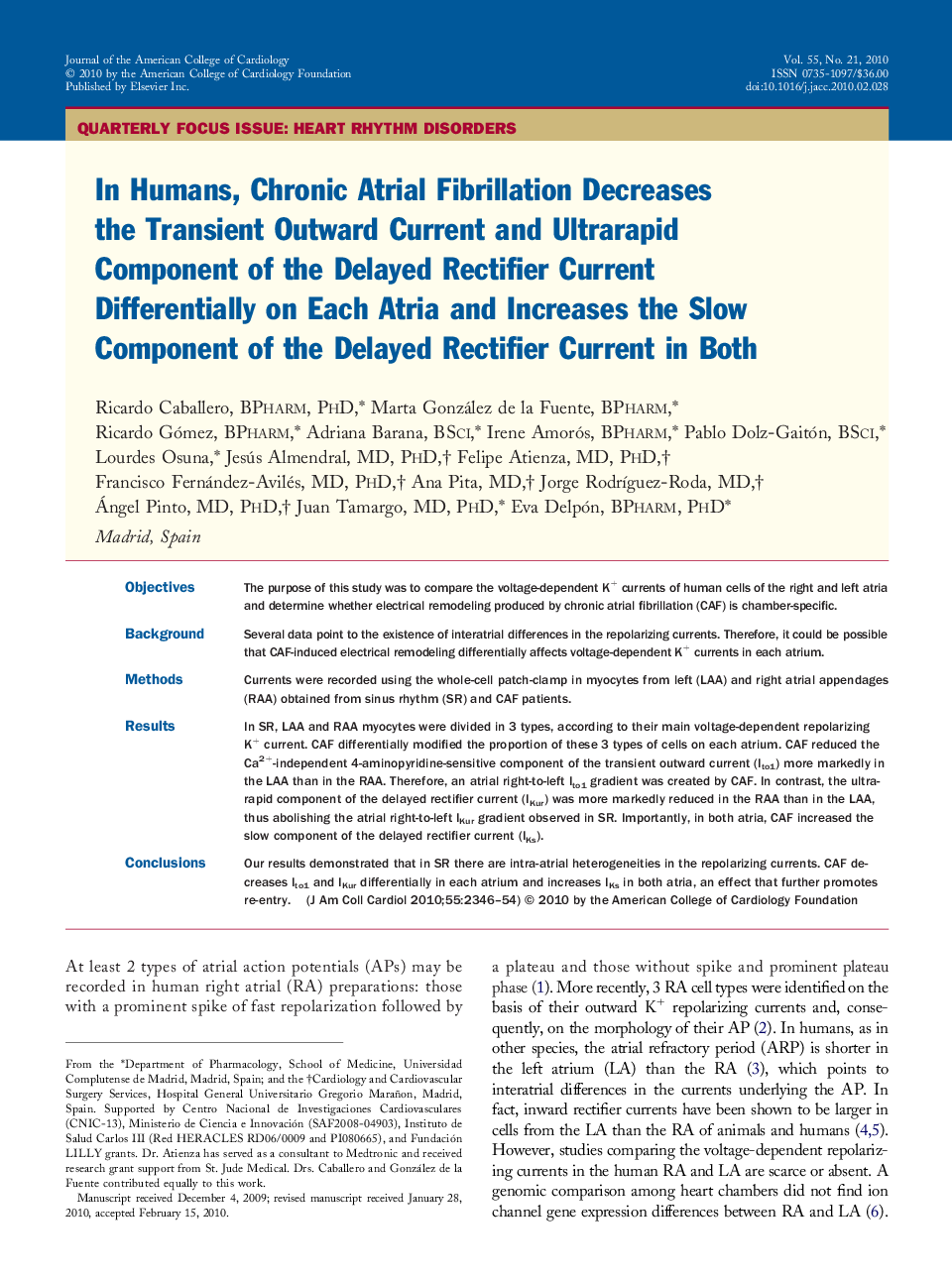| Article ID | Journal | Published Year | Pages | File Type |
|---|---|---|---|---|
| 2950975 | Journal of the American College of Cardiology | 2010 | 9 Pages |
ObjectivesThe purpose of this study was to compare the voltage-dependent K+currents of human cells of the right and left atria and determine whether electrical remodeling produced by chronic atrial fibrillation (CAF) is chamber-specific.BackgroundSeveral data point to the existence of interatrial differences in the repolarizing currents. Therefore, it could be possible that CAF-induced electrical remodeling differentially affects voltage-dependent K+currents in each atrium.MethodsCurrents were recorded using the whole-cell patch-clamp in myocytes from left (LAA) and right atrial appendages (RAA) obtained from sinus rhythm (SR) and CAF patients.ResultsIn SR, LAA and RAA myocytes were divided in 3 types, according to their main voltage-dependent repolarizing K+current. CAF differentially modified the proportion of these 3 types of cells on each atrium. CAF reduced the Ca2+-independent 4-aminopyridine-sensitive component of the transient outward current (Ito1) more markedly in the LAA than in the RAA. Therefore, an atrial right-to-left Ito1gradient was created by CAF. In contrast, the ultrarapid component of the delayed rectifier current (IKur) was more markedly reduced in the RAA than in the LAA, thus abolishing the atrial right-to-left IKurgradient observed in SR. Importantly, in both atria, CAF increased the slow component of the delayed rectifier current (IKs).ConclusionsOur results demonstrated that in SR there are intra-atrial heterogeneities in the repolarizing currents. CAF decreases Ito1and IKurdifferentially in each atrium and increases IKsin both atria, an effect that further promotes re-entry.
